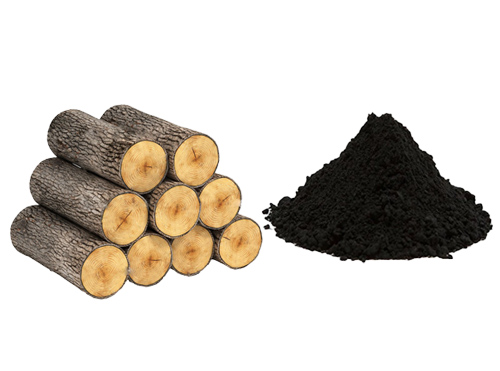Activated carbon is a highly versatile adsorbent used in various industries for its exceptional adsorption properties. One of the significant sources of activated carbon is wood, which offers a sustainable and effective raw material for producing high-quality activated carbon. This essay explores the applications and advantages of wood-based activated carbon, highlighting its diverse uses and environmental significance.
Water Treatment: Wood-based activated carbon finds extensive application in water treatment processes. It effectively removes impurities, organic contaminants, and undesirable taste and odor compounds from drinking water. The porous structure and large surface area of wood-based activated carbon enhance its adsorption capacity, making it an excellent choice for water purification and treatment.

Gas Purification: Wood-based activated carbon is widely used in gas purification applications. It efficiently removes volatile organic compounds (VOCs), sulfur compounds, and other harmful gases. Its adsorption properties make it ideal for eliminating pollutants and odors, ensuring clean and safe air quality in industrial settings and household applications.
Environmental Remediation: Wood-based activated carbon plays a crucial role in environmental remediation efforts. It helps in the removal of contaminants and pollutants from soil, groundwater, and industrial waste. Wood-based activated carbon can effectively adsorb heavy metals, pesticides, and other toxic substances, contributing to the restoration and protection of ecosystems.
Chemical and Pharmaceutical Industries: Wood-based activated carbon is widely utilized in the chemical and pharmaceutical industries. It is an essential component in various purification processes, where it removes impurities and colorants from chemicals and pharmaceutical products. Wood-based activated carbon aids in the production of high-quality and pure chemicals, ensuring product integrity and meeting industry standards.
Energy Storage: Wood-based activated carbon has shown promising potential in energy storage applications. Its unique porous structure and large surface area make it suitable for use in supercapacitors and energy storage devices. Wood-based activated carbon electrodes exhibit high capacitance, enabling efficient energy storage and delivery, making it an important material in the field of renewable energy.
Wood-based activated carbon offers several advantages. Firstly, it is a renewable resource, as wood can be sustainably sourced from forests and plantations. By utilizing wood waste and byproducts, the environmental impact of waste disposal is reduced. Additionally, wood-based activated carbon exhibits excellent adsorption properties due to its porous structure and inherent chemical composition.
Furthermore, the production and use of wood-based activated carbon contribute to carbon sequestration, as the carbon content in wood remains stored in the activated carbon product, reducing greenhouse gas emissions. This environmental benefit adds to the overall sustainability and viability of wood-based activated carbon.
In conclusion, wood-based activated carbon is a valuable adsorbent with diverse applications. Its uses range from water treatment and gas purification to environmental remediation and energy storage. With its renewable nature, exceptional adsorption capabilities, and potential for carbon sequestration, wood-based activated carbon stands as a sustainable solution for various purification and filtration needs across industries, contributing to a cleaner and greener future.